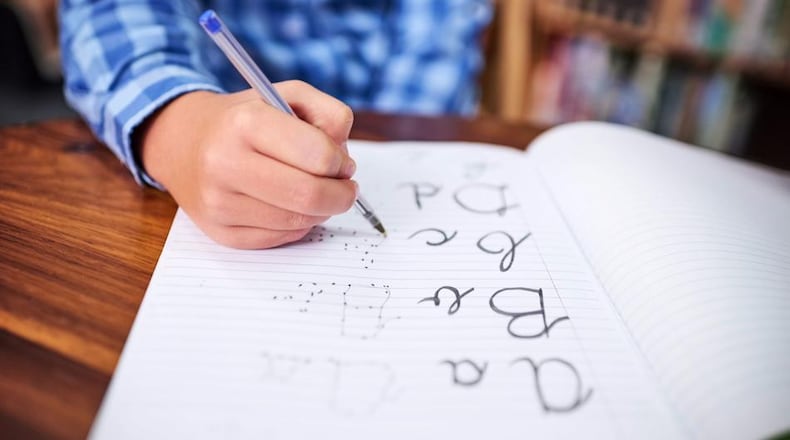Speak in front of people, specifically pre-teens and teenagers? Yikes.
But, after some time outside of said comfort zone, things began to gel. I was learning the students' names (not easy), they were becoming familiar with me, and I began recognizing learning abilities and gaps.
My interest in how and what students learn today versus what students learned in the 80s and 90s is starkly different. I noticed the learning curves with my own children who are far more tech savvy than I was or ever will be, but in the classroom it’s even more evident.
My current long term classroom is in middle school. I became curious about how many students were able to sign their names or write in cursive.
Turns out it’s mostly a lost art. Printing and typing? No problem. But cursive writing has truly become the hieroglyphics of this generation.
I specifically remember being a fourth grader with terrible handwriting. At the time we received grades for ability and neatness. Neatness was not my forte, but my mom still made me write thank you notes. And in time, the neatness came.
So, I have made it a personal goal to introduce to the students — or reintroduce as a few have some ability — cursive writing.
Simple things like addressing an envelope, writing a thank-you note, reading a letter (does anyone do this anymore?) and even having a signature seem like they should still be important life skills (or am I just old school?).
And now that it is in “writing” I have some added accountability to achieve this goal. To do so, that comfort zone is going to have to expand.
How do I introduce this topic without making the students feel like they’ve entered a time machine back to elementary school?
Or, is a time machine the better way to go, maybe?
I will have to consult on best practices with the expert: my 15-year-old daughter.
She can sign her name in cursive, but outside of us making her write thank-you notes and address envelopes, she’s not used it consistently either.
And when I ask her to, it’s a chore.
“Ugh. Mom. I don’t use this,” she retorts.
“Fine, let’s call it ‘exercising your fine-motor skills, your cerebellum,’ is that better?”
I’ve since been down the rabbit hole of cursive writing resources. Not wanting to make the students feel like 8-year-olds again, I did find cursive writing workbooks for teens. Clearly, I am not the only “teacher” that considers this lost art an important skill.
Will the students ever use the cursive writing I so much want them to learn? It’s unlikely, but if they gain the ability to read an old hand-written letter from a long-lost relative, then the lost art will have been found again.
Motherhood, Part II is a recurring column in the News-Sun.
About the Author
